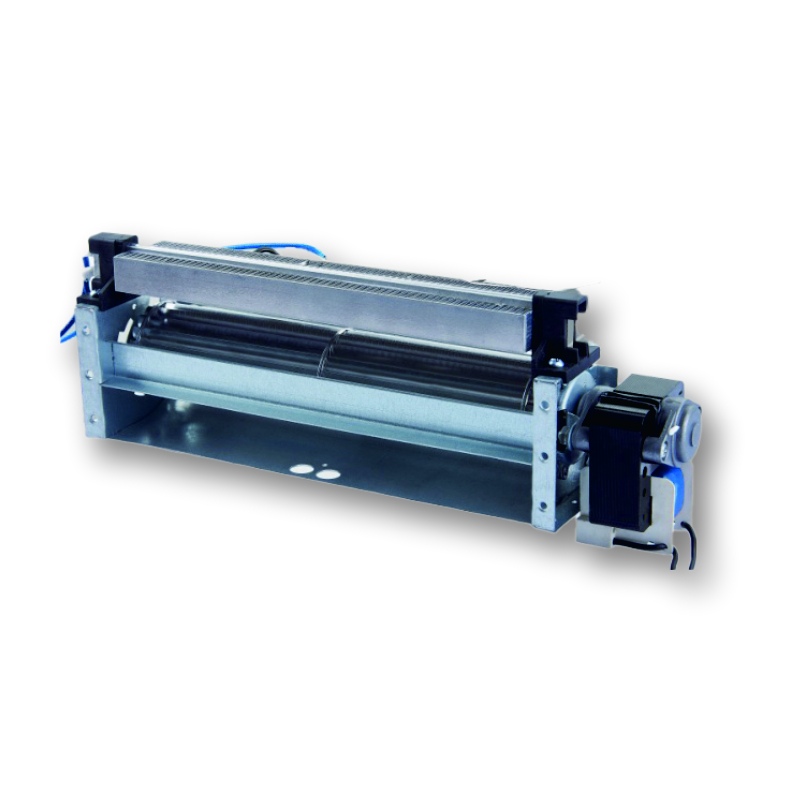Introduction to radiator motors
The radiator motor is a critical component in automotive engineering, responsible for driving the radiator fan that cools the engine. The motor ensures that the engine operates within optimal temperature ranges, thereby preventing overheating. This article delves into the functionality, types, and significance of radiator motors in modern vehicles, as well as their role in maintaining engine efficiency.
Basic Functionality of Radiator Motors
Essential Role in Engine Cooling
Radiator motors are integral to the cooling system of a vehicle. They power the radiator fan, which circulates air to dissipate heat from the engine's coolant. By maintaining a stable temperature, the motor helps in reducing engine wear and enhancing fuel efficiency. A malfunctioning motor can lead to overheating, which may cause severe engine damage.
Interaction With the Vehicle's Systems
The radiator motor works in conjunction with other components such as the thermostat, water pump, and coolant. It is triggered by temperature sensors that detect when the engine temperature rises above a set threshold. This orchestrated effort ensures that the engine maintains a consistent operating temperature.
Types of Radiator Motors
Electric Radiator Motors
Electric motors are widely used in modern vehicles due to their efficiency and compact size. They are powered by the vehicle's electrical system and provide precise control over fan speed, enhancing the engine's cooling efficiency. This type is prevalent in vehicles where space is a constraint, offering the advantage of being easily integrated into tight engine bays.
Mechanical Radiator Motors
Older vehicles often use mechanical radiator motors, which are belt-driven and directly linked to the engine's rotation. These motors provide a robust cooling solution but require more space and can impact engine performance by drawing power directly from the engine. Despite these limitations, they are still favored for vehicles requiring substantial cooling power.
Key Components of Radiator Motors
Motor Assembly
The radiator motor assembly comprises the motor unit, fan blades, and housing. The motor can be either electrically powered or mechanically driven. The fan blades are designed to maximize airflow efficiency, and the housing protects the components from debris and damage.
Control Systems
Electric radiator motors feature control systems that regulate fan speed based on engine temperature. These systems include sensors and electronic control units (ECUs) that ensure optimal cooling performance by adjusting the fan operation as needed.
Interaction With Engine Cooling System
Role of the Thermostat
The thermostat plays a critical role in the cooling system by determining when the radiator motor should activate. It ensures that the engine reaches and maintains the desired operating temperature, optimizing performance and fuel efficiency.
Integration With the Water Pump
The water pump circulates coolant through the engine and radiator. The radiator motor aids in the dissipation of heat absorbed by the coolant, thereby preventing the engine from overheating. This partnership is vital for the vehicle's longevity and reliability.
Common Issues and Failures
Diagnosis of Motor Failures
Radiator motors can fail due to electrical faults or mechanical wear. Symptoms of a failing motor include engine overheating, unusual noises, or a non-operational fan. Regular inspections and maintenance can help identify issues early, reducing the risk of engine damage.
Impact of Failure on Vehicle Performance
An inoperative radiator motor can lead to engine overheating, reduced efficiency, and potential engine failure. Immediate attention is required to prevent costly repairs or permanent damage. Wholesale suppliers and manufacturers often provide replacement parts to ensure availability and compatibility.
Maintenance and Troubleshooting
Routine Inspections
Regular checks on the radiator motor and fan assembly are essential for maintaining optimal vehicle performance. Inspecting for signs of wear, damage, and electrical connectivity can prevent unexpected failures. Factory service manuals provide guidelines to ensure thorough inspections.
Troubleshooting Techniques
Diagnosing radiator motor issues involves checking electrical connections, motor functionality, and sensor operations. Using diagnostic tools can help identify specific problems, facilitating timely repairs and reducing downtime. Efficient troubleshooting ensures the longevity of the motor and the cooling system.
Advances in Radiator Motor Technology
Innovations in Motor Efficiency
Recent advancements have led to the development of more efficient and reliable radiator motors. Improvements in materials and design have enhanced performance, resulting in better cooling and reduced energy consumption. These advances are crucial in meeting the demands of modern, high-performance engines.
Integration With Vehicle Electronics
Modern radiator motors are increasingly integrated with vehicle electronics, allowing for more dynamic control and real-time adjustments. This integration aids in optimizing cooling efficiency and adapting to varying engine loads and environmental conditions.
Cost and Replacement Considerations
Pricing Factors
The cost of radiator motors varies based on type, efficiency, and vehicle compatibility. While electric motors are generally more expensive due to their advanced features, they offer significant long-term benefits. Purchasing from a reputable manufacturer or wholesale supplier ensures quality and cost-effectiveness.
Replacement Procedures and Recommendations
Replacing a radiator motor necessitates careful attention to compatibility with the vehicle's cooling system. Factory-trained technicians should perform installations to ensure proper functioning. Regular replacement of worn components is crucial for maintaining a vehicle's reliability and performance.
Environmental Impact and Efficiency
Eco-Friendly Solutions
Advancements in radiator motor technology have resulted in more environmentally friendly solutions. By improving efficiency and reducing energy consumption, these motors contribute to lower emissions and a smaller carbon footprint. Manufacturers continue to innovate to meet global environmental standards.
Impact on Fuel Economy
Efficient radiator motors improve overall vehicle fuel economy by reducing the engine load and optimizing thermal management. These improvements are crucial for meeting increasingly stringent fuel efficiency regulations and providing cost savings for consumers.
Hanlang Technology Provide Solutions
Hanlang Technology offers comprehensive solutions for radiator motor needs, combining cutting-edge technology with exceptional quality. As a leading manufacturer, Hanlang Technology provides a range of motors engineered to meet diverse vehicle requirements. Our products are designed to enhance cooling efficiency and reliability, ensuring optimal engine performance. With a commitment to innovation and customer satisfaction, we deliver solutions that meet the demands of modern automotive applications. Trust Hanlang Technology for your radiator motor needs and experience unparalleled quality and service.




